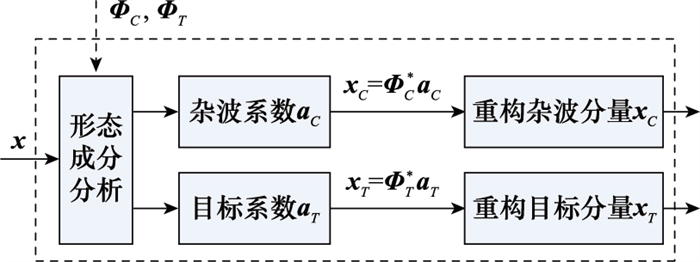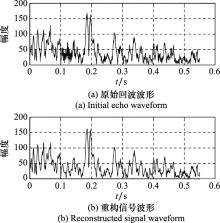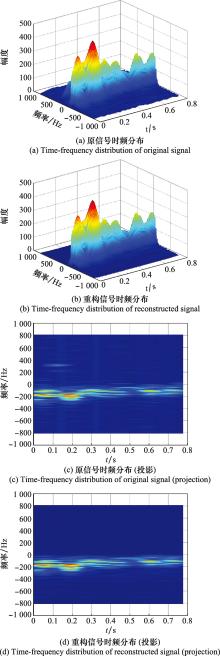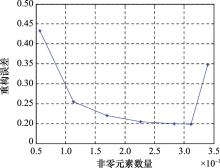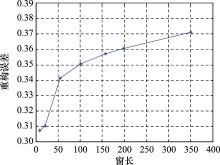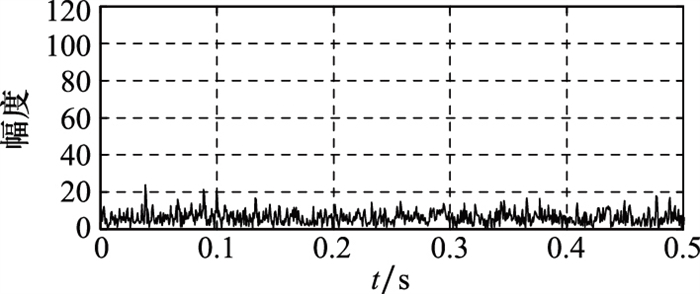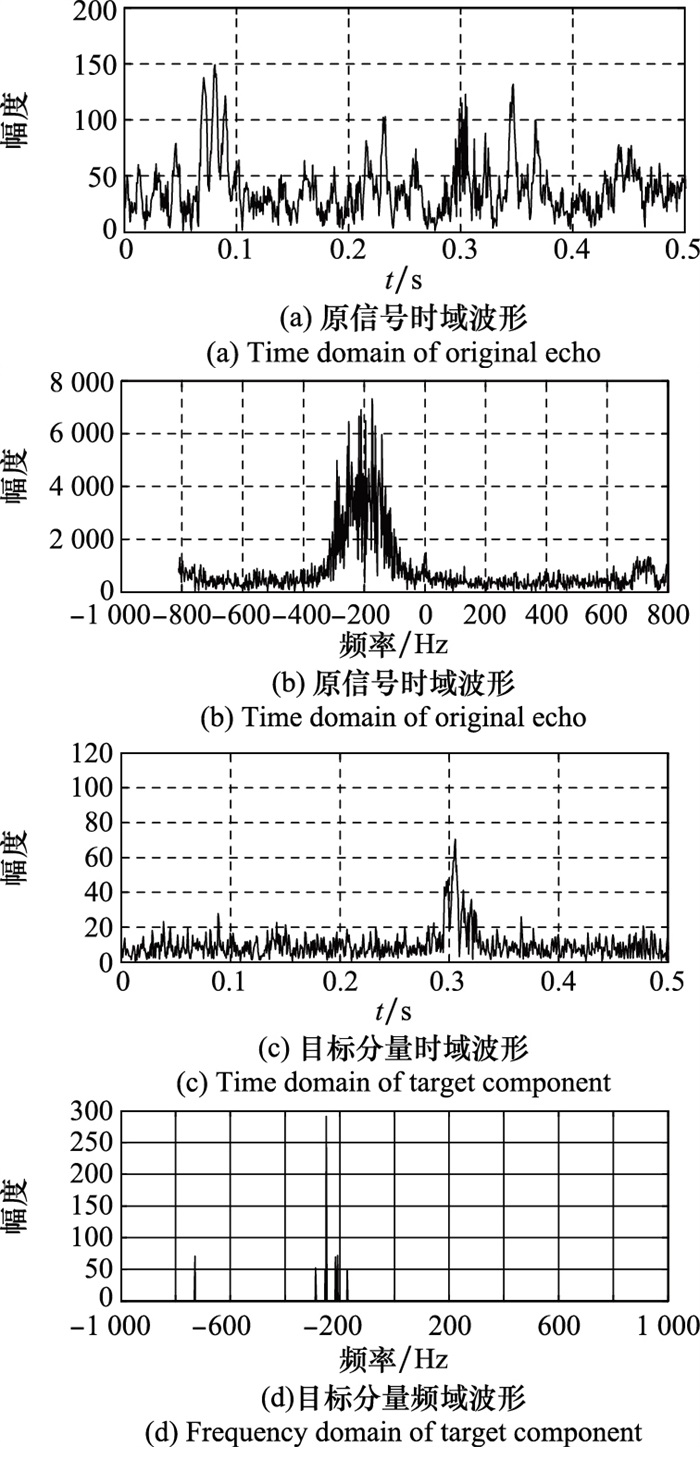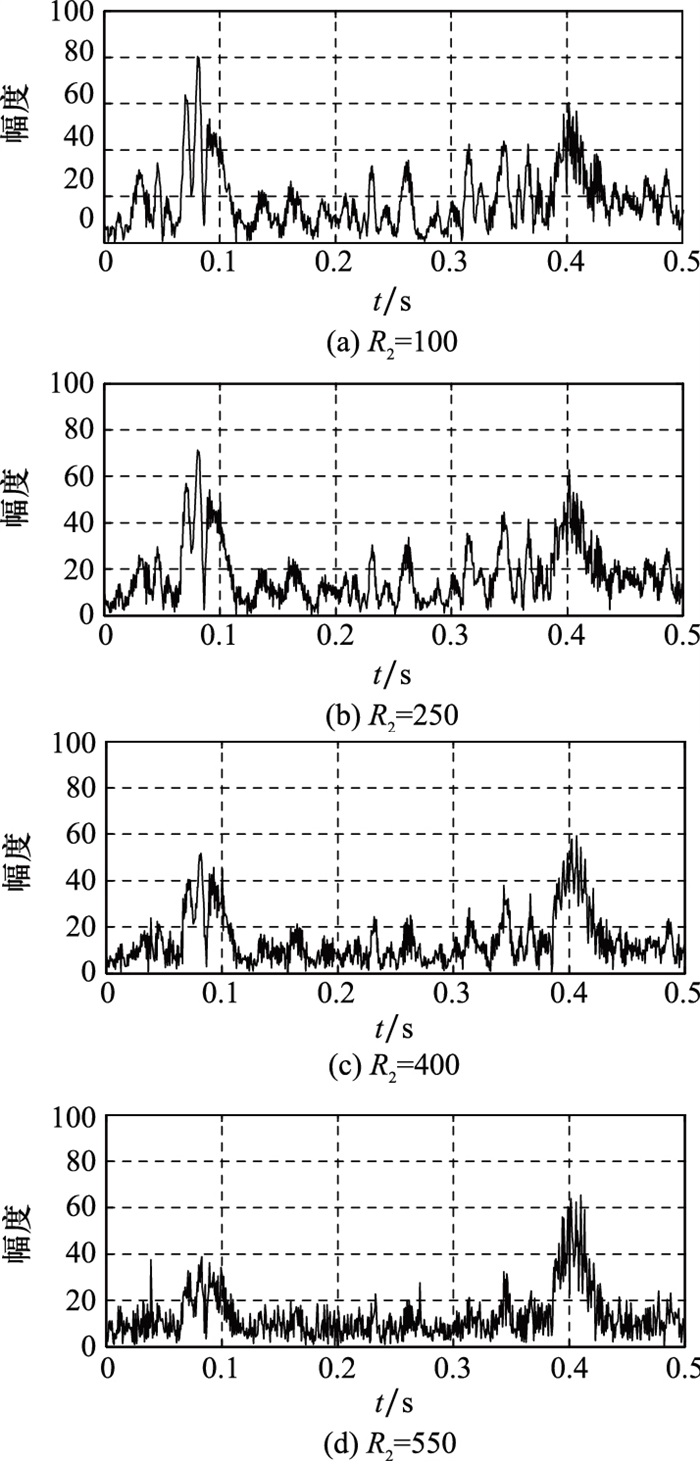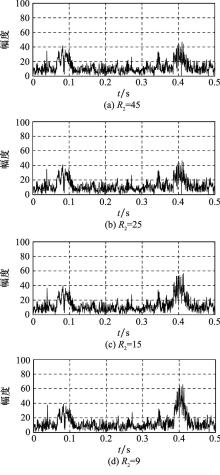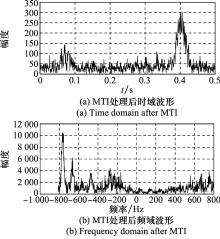Systems Engineering and Electronics ›› 2022, Vol. 44 ›› Issue (3): 777-785.doi: 10.12305/j.issn.1001-506X.2022.03.09
• Sensors and Signal Processing • Previous Articles Next Articles
Sea clutter suppression and target extraction algorithm based on sparse reconstruction
Wenjing LI1, Zhuolin LI1,*, Zhentao YUAN2
- 1. Beijing Institute of Radio Measurement, Beijing 100854, China
2. Air Force Academy, Beijing 100085, China
-
Received:2020-12-20Online:2022-03-01Published:2022-03-10 -
Contact:Zhuolin LI
CLC Number:
Cite this article
Wenjing LI, Zhuolin LI, Zhentao YUAN. Sea clutter suppression and target extraction algorithm based on sparse reconstruction[J]. Systems Engineering and Electronics, 2022, 44(3): 777-785.
share this article
| 1 | LUO Q . Small moving target detection using sparse clutter mode- ling[J]. Modern Radar, 2016, 38 (2): 43- 46, 83. |
| 2 |
DUK V , ROSENBERG L , NGB W . Target detection in sea-clutter using stationary wavelet transforms[J]. IEEE Trans.on Aerospace and Electronic Systems, 2017, 53 (3): 1136- 1146.
doi: 10.1109/TAES.2017.2667558 |
| 3 | PAN M X, XIE S, WANG S N, et al. Research on tunable Q-factor wavelet transform sea clutter suppression algorithm based on sparse representation[C]//Proc. of the 2nd IEEE Advanced Information Management, Communicates, Electronic and Automation Control Conference (IMCEC), 2018: 2511-2515. |
| 4 |
HU J , TUNG W W , GAO J B . Detection of lowobservable targets within sea clutter by structure functionbased multifractal analysis[J]. IEEE Trans.on Antennas and Propagation, 2006, 54 (1): 136- 143.
doi: 10.1109/TAP.2005.861541 |
| 5 |
ZHAO Z Q , TAO R , LI G P , et al. Sparse fractional energy distribution and its application to radar detection of marine targets with micro-motion[J]. IEEE Sensors Journal, 2019, 19 (24): 12165- 12174.
doi: 10.1109/JSEN.2019.2937173 |
| 6 | ZHANG X F, YANG D, GUO J Q, et al. Weak moving target detection based on short-time fourier transform in sea clutter[C]// Proc. of the IEEE 4th International Conference on Signal and Image Processing (ICSIP), 2019: 415-419. |
| 7 | CHEN X, YU X C, GUAN J M, et al. Detection and extraction of marine target with micromotion via short-time fractional Fourier transform in sparse domain[C]//Proc. of the IEEE International Conference on Signal Processing, Communications and Computing, 2016. |
| 8 | CHEN X W, HUANG Y, GUAN J F, et al. Radar micro-Doppler signal detection and extraction via short-time sparse fractional fourier transform[C]//Proc. of the International Conference on Radar Systems, 2017. |
| 9 | 陈小龙, 关键, 于晓涵, 等. 基于短时稀疏时频分布的雷达目标微动特征提取及检测方法[J]. 电子与信息学报, 2017, 39 (5): 1017- 1023. |
| CHEN X L , GUAN J , YU X H , et al. Radarmicro-Doppler signature extraction and detection viashort-time sparse time-frequency distribution[J]. Journal of Electronics & Information Technology, 2017, 39 (5): 1017- 1023. | |
| 10 | LI Z H , CHEN J , SHEN M R , et al. Sea clutter suppression approach for target images at sea based on chaotic neural network[J]. Journal of Optoeletronics, 2014, 25 (3): 588- 594. |
| 11 | LI H , REN J F , FAN Y . Ground clutter suppression method based on FNN for dual-polarisaton weather radar[J]. The Journal of Engineering, 2019, 19 (10): 6043- 6047. |
| 12 | WEN L, ZHONG C C, HUANG X M, et al. Sea clutter suppression based on selective reconstruction of features[C]//Proc. of the 6th Asia-Pacific Conference on Synthetic Aperture Radar(APSAR), 2019. |
| 13 |
BIONDI F . Low-rank pulse sparse decomposition and localized radon transform for ship-wake detection in synthetic aperture radar images[J]. IEEE Geoscience and Remote Sensing Letters, 2018, 15 (1): 117- 121.
doi: 10.1109/LGRS.2017.2777264 |
| 14 | DONG Z Z, SUN J, SUN J Q, et al. Research on sea clutter suppression using sparse dictionary learning[C]//Proc. of the IEEE 8th Joint International Information Technology and Artificial Intelligence Conference, 2019: 967-971. |
| 15 | NG B, ROSENBERG L. Sparse detection in sea-clutter using orthogonal matching pursuit[C]//Proc. of the IEEE Radar Conference, 2019. |
| 16 | STARCK J L , ELAD M , DONOHO D . Redundant multiscale transforms and their application for morphological component analysis[J]. Advances in Imaging and Electron Physics, 2004, 132 (82): 287- 348. |
| 17 | 李映, 张艳宁, 许星. 基于信号稀疏表示的形态成分分析: 进展和展望[J]. 电子学报, 2009, 37 (1): 146- 152. |
| LI Y , ZHANG Y N , XU X . Advances and perspective on morphological component analysis based on sparse representation[J]. Acta Electronica Sinica, 2009, 37 (1): 146- 152. | |
| 18 |
陈小龙, 关键, 董云龙, 等. 稀疏域海杂波抑制与微动目标检测方法[J]. 电子学报, 2016, 44 (4): 860- 867.
doi: 10.3969/j.issn.0372-2112.2016.04.015 |
|
CHEN X L , GUAN J , DONG Y L , et al. Sea clutter suppression and micromotion target detection in sparse domain[J]. Acta Electronica Sinica, 2016, 44 (4): 860- 867.
doi: 10.3969/j.issn.0372-2112.2016.04.015 |
|
| 19 |
FARSHCHIAN M . Target extraction and imaging of maritime targets in the sea clutter spectrum using sparse separation[J]. IEEE Geoscience and Remote Sensing Letters, 2017, 14 (2): 232- 236.
doi: 10.1109/LGRS.2016.2636253 |
| 20 |
ROSENBERG L , DUK V . Detection in sea clutter using sparse signal separation[J]. IEEE Trans.on Aerospace and Electronic Systems, 2020, 56 (6): 4384- 4394.
doi: 10.1109/TAES.2020.2989093 |
| 21 | HE H J , GENG M , NING X F . Weak target detection in sea clutter via signal decomposition[J]. Electronics Quality, 2020, (11): 148- 152. |
| 22 | YU X M, CHEN X, HU W, et al. An overview of marine moving target detection via high-resolution sparse representation[C]//Proc. of the CIE International Conference on Radar, 2017. |
| 23 | FARSHCHIAN M, SELESNICK I. Application of a sparse time-frequency technique for targets with oscillatory fluctuations[C]//Proc. of the IEEE Internet Waveform Diversity Design Conference, 2012: 191-196. |
| 24 |
UYSAL F , SELESNICK I , PILLAI U , et al. Dynamic clutter mitigation using sparse optimization[J]. IEEE Aerospace and Electronic Systems Magazine, 2014, 29 (7): 37- 49.
doi: 10.1109/MAES.2014.130137 |
| 25 | 杨国铮, 禹晶, 肖创柏, 等. 基于形态成分分析的复杂背景SAR图像舰船尾迹检测[J]. 计算机辅助设计与图形学报, 2016, 28 (10): 1662- 1671. |
| YANG G Z , YU J , XIAO C B , et al. Ship wake detection in SAR images with complex backgrounds using morphological omponent analysis[J]. Journal of Computer-Aided Design & Computer Graphics, 2016, 28 (10): 1662- 1671. | |
| 26 |
NGUYEN S T N , AL-ASHWAL W A . Sea clutter mitigation using resonance-based signal decomposition[J]. IEEE Geo- science and Remote Sensing Letters, 2015, 12 (11): 2257- 2261.
doi: 10.1109/LGRS.2015.2464807 |
| 27 | BURNS J W, SUBOTIC N S, THELEN B J, et al. Decomposition approaches to separate clutter/background from buried object signature[C]//Proc. of the International Conference on Electromagnetics in Advanced Applications, 2017: 1909-1912. |
| 28 | SELESNICK I W. Short-time Fourier transform and its inverse[EB/OL]. [2021-06-23]. http://eeweb.poly.edu/iselesni/EL713/STFT/stft_inverse.pdf. |
| 29 |
STARCK J L , ELAD M , DONOHO D . Image decomposition via the combination of sparse representations and variational approach[J]. IEEE Trans.on Image Processing, 2005, 14 (10): 1570- 1582.
doi: 10.1109/TIP.2005.852206 |
| 30 |
AFONSO M V , BIOUCAS-DIAS J M , FIGUEIREDO M A T . Fastimage recovery using variable splitting and constrained optimization[J]. IEEE Trans.on Image Processing, 2010, 19 (9): 2345- 2356.
doi: 10.1109/TIP.2010.2047910 |
| [1] | Yuzhuo WANG, Shengqi ZHU, Ximin LI, Lan LAN. Range ambiguous clutter suppression for FDA MIMO bistatic radar with main lobe correction [J]. Systems Engineering and Electronics, 2022, 44(5): 1483-1494. |
| [2] | Mingze WANG, Wei LI, Junwei MA, Xiangping LI. Clutter suppression algorithm based on pixel vector elimination in through-the-wall radar [J]. Systems Engineering and Electronics, 2022, 44(3): 827-833. |
| [3] | Siyu DU, Yinghui QUAN, Minghui SHA, Wen FANG, Mengdao XING. Waveform optimization for SFA radar based on evolutionary particle swarm optimization [J]. Systems Engineering and Electronics, 2022, 44(3): 834-840. |
| [4] | Yanling SHI, Lei WANG, Junhao LI. CFAR detection for small targets on sea surface based on singular value decomposition in projection space [J]. Systems Engineering and Electronics, 2022, 44(2): 512-519. |
| [5] | Shuxian DONG, Yinghui QUAN, Minghui SHA, Wen FANG, Mengdao XING. Frequency agile radar combined with intra-pulse frequency coding to resist intermittent sampling jamming [J]. Systems Engineering and Electronics, 2022, 44(11): 3371-3379. |
| [6] | Xiaojiao PANG, Yongbo ZHAO, Chenghu CAO, Yili HU, Sheng CHEN. Reduced-dimension space-time adaptive processing method based on the covariance fitting criterion [J]. Systems Engineering and Electronics, 2022, 44(1): 86-93. |
| [7] | Yan ZHANG, Baoping WANG, Yang FANG, Zuxun SONG. Microwave 3D imaging method based on orthogonal spectrum reconstruction [J]. Systems Engineering and Electronics, 2021, 43(8): 2090-2098. |
| [8] | Rui ZHANG, Yinghui QUAN, Shengqi ZHU, Yachao LI, Mengdao XING. Microwave correlation imaging method based on improved OMP algorithm for sparse targets [J]. Systems Engineering and Electronics, 2021, 43(7): 1756-1765. |
| [9] | Yan ZHANG, Chunmao YE, Yaobin LU, Xuebin CHEN. Jamming suppression method for hyperbolic frequency modulated waveform based on sparse reconstruction [J]. Systems Engineering and Electronics, 2021, 43(7): 1766-1774. |
| [10] | Xun DING, Jindong ZHANG, Na WANG, Yuying WANG. System phase error estimation and sparse scene reconstruction algorithm of frequency agile radar based on coherent accumulation [J]. Systems Engineering and Electronics, 2021, 43(6): 1515-1523. |
| [11] | Binbin LI, Hui CHEN, Weijian LIU, Zhaojian ZHANG, Bilei ZHOU. Joint multi-dimensional parameters estimation for large-sized electromagnetic vector sensor array based on sparse reconstruction in limited snapshots [J]. Systems Engineering and Electronics, 2021, 43(4): 868-874. |
| [12] | Dou SUN, Shiqi XING, Haifeng GAO, Bo PANG, Yongzhen LI, Xuesong WANG. 3D sparse imaging for non-uniformly sampled SAR based on feature enhancement [J]. Systems Engineering and Electronics, 2021, 43(4): 901-910. |
| [13] | Yuqi LIU, Xianrong WAN, Jianxin YI, Hengyu KE. Clutter suppression method for passive radar based on channel Doppler characteristic [J]. Systems Engineering and Electronics, 2021, 43(1): 55-61. |
| [14] | Shuxian DONG, Yinghui QUAN, Xiada CHEN, Xia GAO, Yachao LI, Mengdao XING. Interference suppression algorithm based on frequency agility combined with mathematical morphology [J]. Systems Engineering and Electronics, 2020, 42(7): 1491-1498. |
| [15] | Mingming TIAN, Guisheng LIAO, Yunpeng LI, Shengqi ZHU. Clutter properties and suppression method of hypersonic platform radar [J]. Systems Engineering and Electronics, 2020, 42(2): 301-308. |
| Viewed | ||||||
|
Full text |
|
|||||
|
Abstract |
|
|||||

